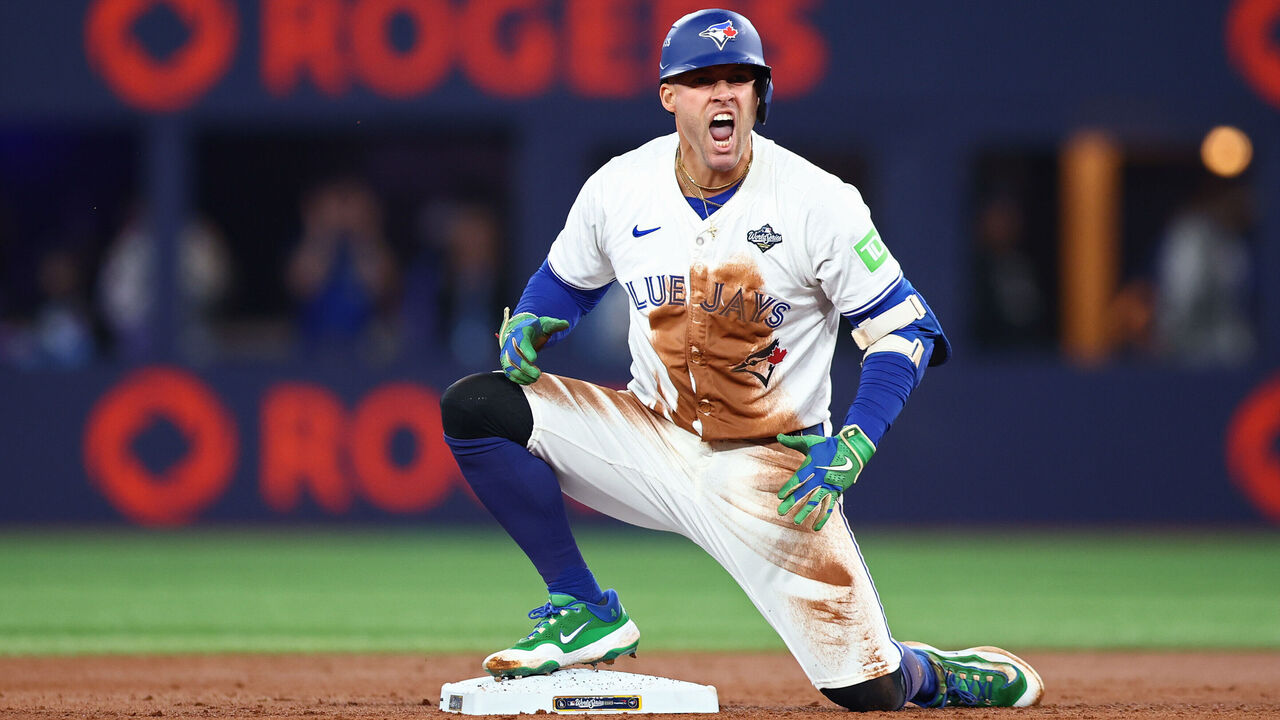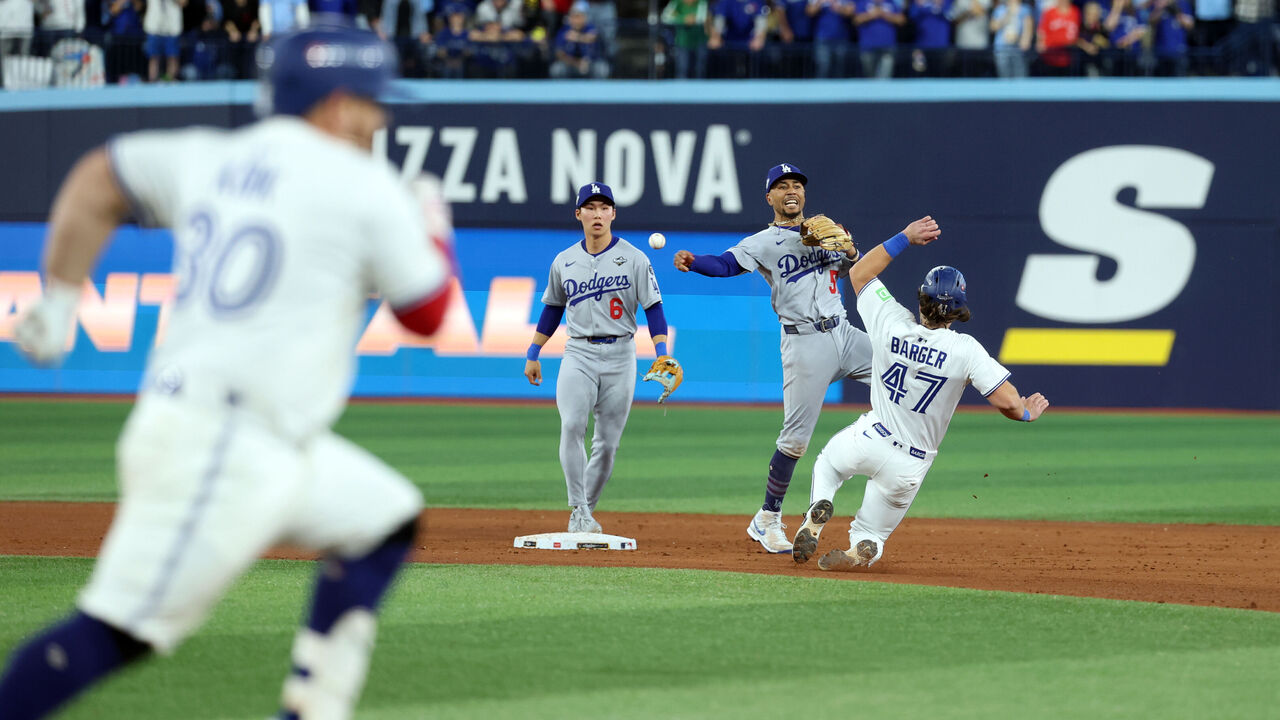Hope to heartbreak: Can Jays recover from devastating World Series loss?
Is it possible to have a season that both wildly surpassed expectations and was also a crushing disappointment?
The 2025 Toronto Blue Jays have discovered that the answer is, unfortunately, yes.
Let us start with the first part: The Jays were on nobody's list of preseason playoff favorites. They sagged to a last-place finish in the AL East in 2024, weighed down by an anemic offense that was almost comically short of power. The front office failed to land its biggest targets in free agency, settling instead on backup plans.
With stars Vladimir Guerrero Jr. and Bo Bichette nearing free agency, the outlook was grim. It was fair to wonder if the competitive window that team president Mark Shapiro and general manager Ross Atkins always talked about had already closed.
But then the Blue Jays went out and won a lot of ball games. Some combination of a new approach at the plate, preached by incoming hitting coach David Popkins, and a hard-to-define sense of togetherness that everyone in a Blue Jays uniform loved to talk about, helped to revive that moribund offense and change the personality of the team.
Suddenly they were piling up hits, wearing out pitchers, scoring runs in bunches and basically looking nothing like the team of 2024, even though most of the roster was the same.
They won a division title, an unthinkable prospect in March, and two playoff rounds, after having not won a single playoff game since 2016. The interest in Toronto baseball that had waned in the years since the 2015-16 teams was reborn again, and this time a new generation of fans came along for the ride.
It was a remarkable accomplishment, all the more so because the 2025 season came out of nowhere.

But there's no escaping the absolute nightmare of the ending. The Toronto Maple Leafs, for all of their recent postseason misery, have at least had the good sense to fall on their collective face before the stakes are too high.
The Blue Jays, though, brought the World Series back to the Rogers Centre with a 3-2 lead over the favored Los Angeles Dodgers. A title after 32 long years was so very close.
But they spent most of Game 6 starting rallies that they couldn't quite finish, the most painful of which came in the ninth inning when Addison Barger's rocket to left field somehow wedged between the wall and the warning track, forcing runners to stop instead of scoring a run. Andrés Giménez then hit a sinking liner that was caught, and Barger was doubled off second base, having strayed too far on contact.
That brutal finish, turning a would-be World Series-winning rally into a game-ending situation in an instant, would somehow get even worse a night later.
The Jays' whole identity over the course of this magical run was that they were a team that did the little things right and didn't beat themselves. It was the defining characteristic of the series wins over the New York Yankees and Seattle Mariners. But given multiple chances to bring a run home from third base with just one out, those ever-reliable bats failed.
In the bottom of the ninth, with the bases loaded, Daulton Varsho needed to hit a ball anywhere but on the ground. He hit it on the ground, and the Dodgers were able to get a force out at home by the slimmest of margins. Ernie Clement followed with a high shot to left field that soared long enough for an entire stadium to think that the World Series was about to be won, only for L.A.'s Andy Pages to make the catch while steamrolling teammate Kiké Hernández at the wall.
Toronto had some team-of-destiny defensive plays earlier in the game, when they were trying to protect the lead that Bichette's towering three-run homer had given them, but now it was starting to feel like the Dodgers were getting all the breaks.
Needing a run to save the game, and the series, in the bottom of the 11th, Guerrero was standing on third base after a leadoff double and a sacrifice bunt. A Barger walk put runners at the corners with one out. Alejandro Kirk, so clutch for the Jays all season, just needed to hit a ball to the outfield to tie the game. Instead, Yoshinobu Yamamoto - yes, the same guy who started Game 6 - broke his bat and induced a double play. A would-be Series-winning rally was, again, snuffed out in a flash.

Three moments over two nights where it seemed that the Blue Jays were on the verge of a massive late rally, in front of a booming home crowd, and all they ended up with was stunned silence. Each time.
How do you come back from that? Can you come back from that?
The Blue Jays, of course, have no choice but to try.
Much of the team's core will return in 2026, but changes also loom. Bichette is a free agent, and his last game in Toronto might have included the home run that, for a long time, looked like it would win the World Series. Pitchers like Max Scherzer, Shane Bieber, and Chris Bassitt will similarly have decisions to make.
The front office - it would be a shock if it didn't return intact after finally going on the deepest possible playoff run - will have its own choices to make. Do they want to pay Bichette a top-of-market deal to return at shortstop? Can Jeff Hoffman, burned one time too many in the end, still be the closer? Will whatever it was that made this team so much greater than the sum of its parts still be there when it reconvenes (and inevitably looks at least a little bit different) at spring training? Tricky questions, all.
And so, the Blue Jays will have a long offseason to think about the plays that weren't made.
Then they will gather in Florida, and hope they can rekindle the magic that carried them right to the cusp of glory.
Scott Stinson is a contributing writer for theScore.
HEADLINES
- Bichette ahead of free agency: 'I want to be' with Blue Jays
- Scherzer hints at playing in 2026: Not 'the last pitch I've ever thrown'
- Dodgers' Yamamoto wins World Series MVP
- Dodgers win 2nd straight World Series in Game 7 stunner vs. Jays
- Jays' Kiner-Falefa explains not scoring game-winner after receiving threats